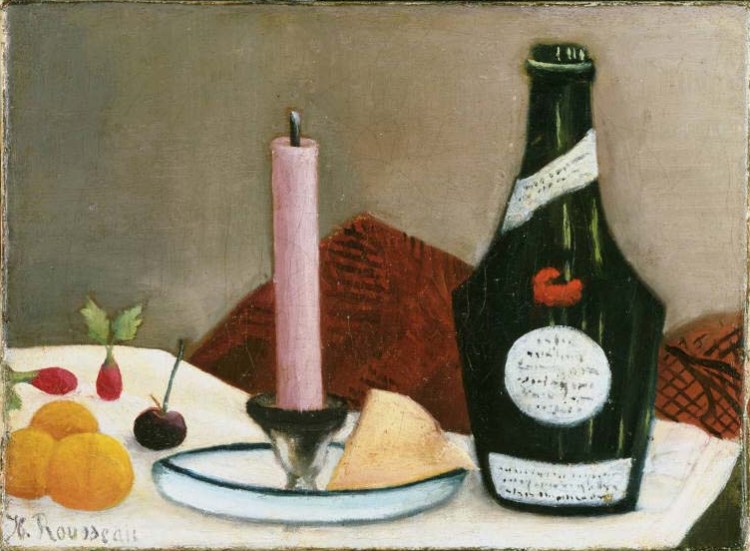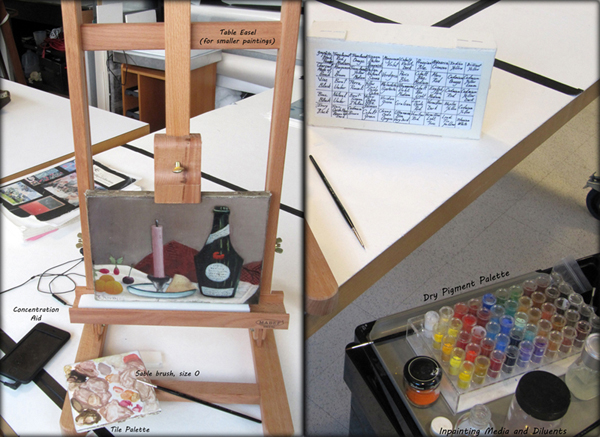French artist Henri Rousseau was born on this day in 1844. His still life The Pink Candle (1908), acquired by Duncan Phillips in 1930 along with Notre Dame (1909), is currently on view upstairs in the original Phillips house as part of Jeanne Silverthorne’s Vanitas! project for the Intersections series. The little painting hangs to the right of a doorway framing Silverthorne’s tour de force in silicone rubber–DNA Candelabra (showing the beginning genetic sequence for depression, anxiety, addiction, anger, and panic) on rubber crate (2007).

Henri Rousseau, The Pink Candle, 1908. Oil on canvas, 6 3/8 x 8 3/4 in. The Phillips Collection, Washington, D.C. Acquired 1930.

Installation view of Rousseau’s The Pink Candle in conversation with Jeanne Silverthorne’s work in Vanitas! on view through June 2 as part of the Intersections series. Photo: Lee Stalsworth

Installation view of Jeanne Silverthorne’s DNA Candelabra (showing the beginning genetic sequence for depression, anxiety, addiction, anger, and panic) on rubber crate, 2007. Platinum, silicone rubber, and phosphorescent pigment, Overall 64 x 60 x 47 in. Courtesy artist and McKee Gallery, New York. Photo: Lee Stalsworth

